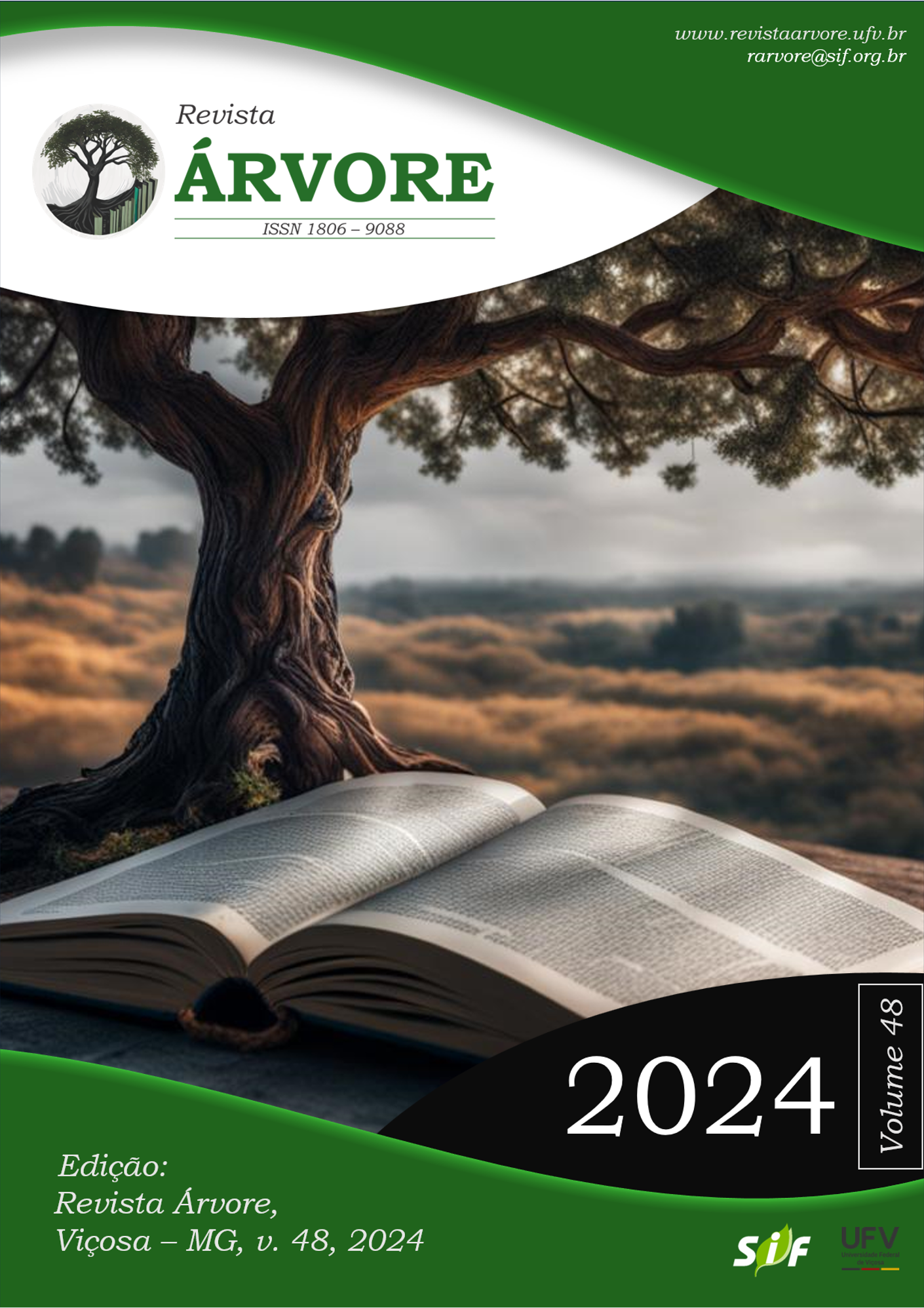Cutting of Eucalyptus camaldulensis tree aiming vegetative rescue of selected genotypes in semiarid conditions
DOI:
https://doi.org/10.53661/1806-9088202448263769Keywords:
Vegetative propagation, Auxins, Coppicing, Clonal forestryAbstract
Eucalyptus camaldulensis is suitable for cultivation in semiarid conditions due to its resistance to long periods of water deficit. Considering their excellent silvicultural performance, the selected genotypes will represent an excellent alternative for future plantings in drought conditions. However, cloning superior genotypes is accomplished by vegetative propagation of mature trees and requires juvenile or rejuvenated material for rooting. The objective of this work was to evaluate the cutting of Eucalyptus camaldulensis aiming vegetative rescue of selected genotypes in semiarid conditions, through the action of the auxins IBA (indole-3-ylbutyric acid) and IAA (indoleacetic acid) in the adventitious rooting of cuttings. The four genotypes were selected at five years old. The trees were cut down 20 cm above the ground at the beginning of the rainy season. The experiments were conducted in 2022, adopting the experimental design in randomized blocks. In the first collection of shoots, the influence of IBA was evaluated. In the second collection, the impact of IAA on rooting was evaluated at concentrations of 0 (control), 2000, and 6000 mg.L-1. The survival of the stump was 100%, producing an average of 30 shoots in the first collection and 40 shoots in the second collection. In the shoots from the second collection, this rate was higher than 50%, with emphasis on the G4 genotype with 80% of rooting. The auxins IAA and IBA contributed little to the increase in rooting (between 12% and 7%, respectively). The genotypes showed a higher percentage of adventitious rooting and a lower percentage of oxidation in the propagules from the second collection. Genotypes conducted in environments with water deficit produce propagules with lower rooting rates, increasing with the improvement of water conditions in the environment where the coppicing is conducted.
Keywords: Vegetative propagation; Auxins; Coppicing; Clonal forestry
Downloads
Published
How to Cite
Issue
Section
License
Copyright (c) 2024 Revista Árvore

This work is licensed under a Creative Commons Attribution 4.0 International License.
All authors agreed to submit the work to Revista Árvore and granted the exclusive license to publish the article. The authors affirm that it is an original work and has not been previously published elsewhere. The scientific content and opinions expressed in the article are the sole responsibility of the authors and reflect their opinions, not necessarily representing the opinions of the editorial board of Revista Árvore or of the Society of Forest Investigations (SIF).








